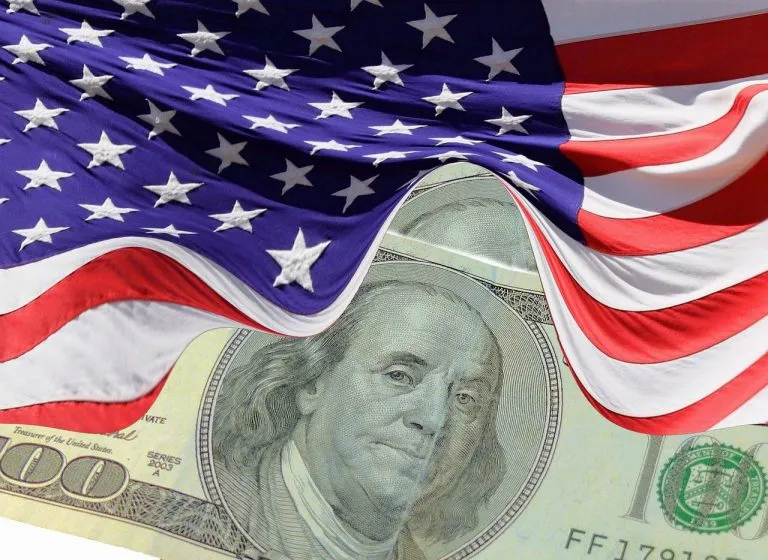US tariffs rock the world, sending the dollar soaring and the yen tumbling
Summary:Trump's new round of tariffs pushed the US dollar to its best week in nearly three years, while the yen's decline triggered official warnings from Japan. Investors should be wary of currency fluctuations and policy game risks. #TrumpTariffs #DollarIndex #YenDepreciation #GlobalExchangeRates #InvestmentAdvice
The strengthening of the US dollar dominates the market trend
This week, US President Donald Trump officially implemented a series of new import tariffs targeting dozens of trading partners, including Canada and Switzerland. The tariff increases are significant, with Canada's tariff increasing to 35% from the previously threatened 25%, and Switzerland's tariff increasing from 31% to 39%.
This move strengthened the dollar's safe-haven status, and the US dollar index (DXY) rose to 100.14 at one point, marking its largest single-week increase of 2.4% since September 2022, continuing its strong pressure on major currencies such as the euro and yen.
Not only that, subject to the new tariffs, the currencies of many Asian countries have come under pressure: the Taiwan dollar, Korean won, and Philippine peso have all fallen to new lows, reflecting that the risk aversion sentiment of regional capital is rapidly heating up.
Yen depreciation triggers intervention warning
The Bank of Japan hinted on Thursday that it was in no rush to raise interest rates in the short term, sparking market concerns about the continued weakening of the yen. The yen fell to 150.91 against the dollar, a four-month low, forcing Japanese Finance Minister Katsunobu Kato to publicly express his "high concern about exchange rate fluctuations."
The continued weakening of the yen not only increases import costs, but may also prompt the Bank of Japan to passively intervene in the future. The ambiguity of this policy stance is gradually becoming another major variable in the global foreign exchange market.

Trade negotiation frictions affect foreign exchange markets
The euro is currently trading below 1.14 against the dollar as the US-EU framework agreement has been criticized by France and the European Parliament, and is interpreted by the market as unfavorable for the eurozone. The Canadian dollar fell to 1.3872 Canadian dollars after the tax rate increase, the lowest level since May.
"The euro is being repriced in by the market and trade policy divergences will continue to put pressure on it," said Mike Houlahan, director of Electus Financial.
Strategic recommendations amid global currency fluctuations
Amid escalating US trade protectionism, a strengthening US dollar, and widespread pressure on non-US currencies, investors need to develop a more flexible global allocation strategy to manage the potential risks and opportunities presented by exchange rate fluctuations. In the short term, investors can focus on US dollar-related asset allocations, such as US Dollar Index Funds (UUP) or US Treasury bond ETFs. These assets offer both defensive and value-added benefits during periods of dollar strength.
At the same time, caution is advised regarding Japanese Yen and Euro assets. Constrained by loose monetary policy and trade frictions, these two currencies are still facing depreciation pressure, and related stocks or bonds should be protected against downside risks. Investors are advised to temporarily avoid highly volatile emerging market currencies, such as the Philippine Peso and the Korean Won, and reassess their positions after policy clarity and exchange rate stabilization.
In addition, the future path of the Federal Reserve's interest rate hikes and monthly non-farm payroll data will have a continuous impact on the foreign exchange market. Investors should dynamically adjust bond duration and yield sensitivity allocations based on changes in fundamentals, seize structural opportunities, and reduce asset disturbances caused by uncertainty.
Despite Trump's increasingly harsh rhetoric against Federal Reserve Chairman Powell, accusing him of being "the wrong choice," the Fed has maintained its policy independence and maintained its current interest rate level. The July non-farm payroll data to be released later will also provide more clues on the path of future rate hikes.
Faced with increasingly complex global monetary policies and trade barriers, investors can only find structural opportunities by maintaining flexible strategies and being vigilant against fluctuations.
Want to be the first to grasp global market trends and investment opportunities? Follow us on BrokerHiveX for the latest in-depth analysis and real-time information!
Further reading
⚠️Risk Warning and Disclaimer
BrokerHivex is a financial media platform that displays information sourced from the public internet or uploaded by users. BrokerHivex does not endorse any trading platform or instrument. We are not responsible for any trading disputes or losses arising from the use of this information. Please note that the information displayed on the platform may be delayed, and users should independently verify its accuracy.


